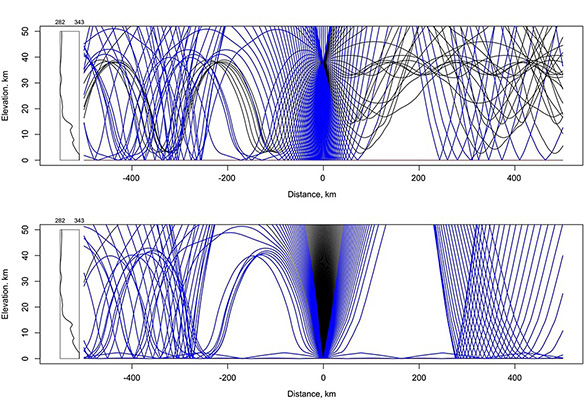Flight Test of a Balloon-borne Aeroseismometer
PI: Daniel Bowman, Sandia National Labs
PI: Daniel Bowman, Sandia National Labs

- TA08 Science Instruments, Observations and Sensor Systems
The primary challenge of balloon-borne infrasound sensors is the lack of direction finding. Since pressure measurements are scalar values (not vector values like seismometers, for example) sensors on a single balloon cannot determine the azimuth of arrival. The consequences of this are twofold: 1) difficulty in distinguishing true far field waves from local noise (e. g. turbulence) and 2) lack of constraint on possible source regions for an incident signal. However, a serendipitous measurement taken on a coupled infrasound/accelerometer payload on the 2016 High Altitude Student Platform (HASP) indicates that the balloon itself is set in motion by even very small acoustic waves impacting the envelope. As a result, the entire flight system can be leveraged as a pendulum seismometer; the resulting motion can be captured using accelerometers and thus provide direction of arrival information for incident acoustic waves.
The instrumentation is presently at a TRL of 4/5, and at the conclusion of the project would achieve a TRL of 6.
The combined infrasound/accelerometer sensor concept is a "technology candidate" since, once realized, it will enhance existing NASA missions and may lead to novel new capabilities. The technology extends powerful subsurface characterization methods developed in seismology into the atmosphere, permitting both geophysical and atmospheric science investigations that would be difficult or impossible otherwise. The primary user would be the NASA Science Mission Directorate.
Technology Details
-
Selection DateREDDI-F1-18 (Aug 2018)
-
Program StatusActive
- 1 Balloon
Development Team
-
PIDaniel Bowman
-
Organization
-
SponsorNASA
-
More Information

